What color should you paint woodwork? Expert ways to factor this small yet impactful detail into color schemes
The color of a room's woodwork can either make or break a color scheme

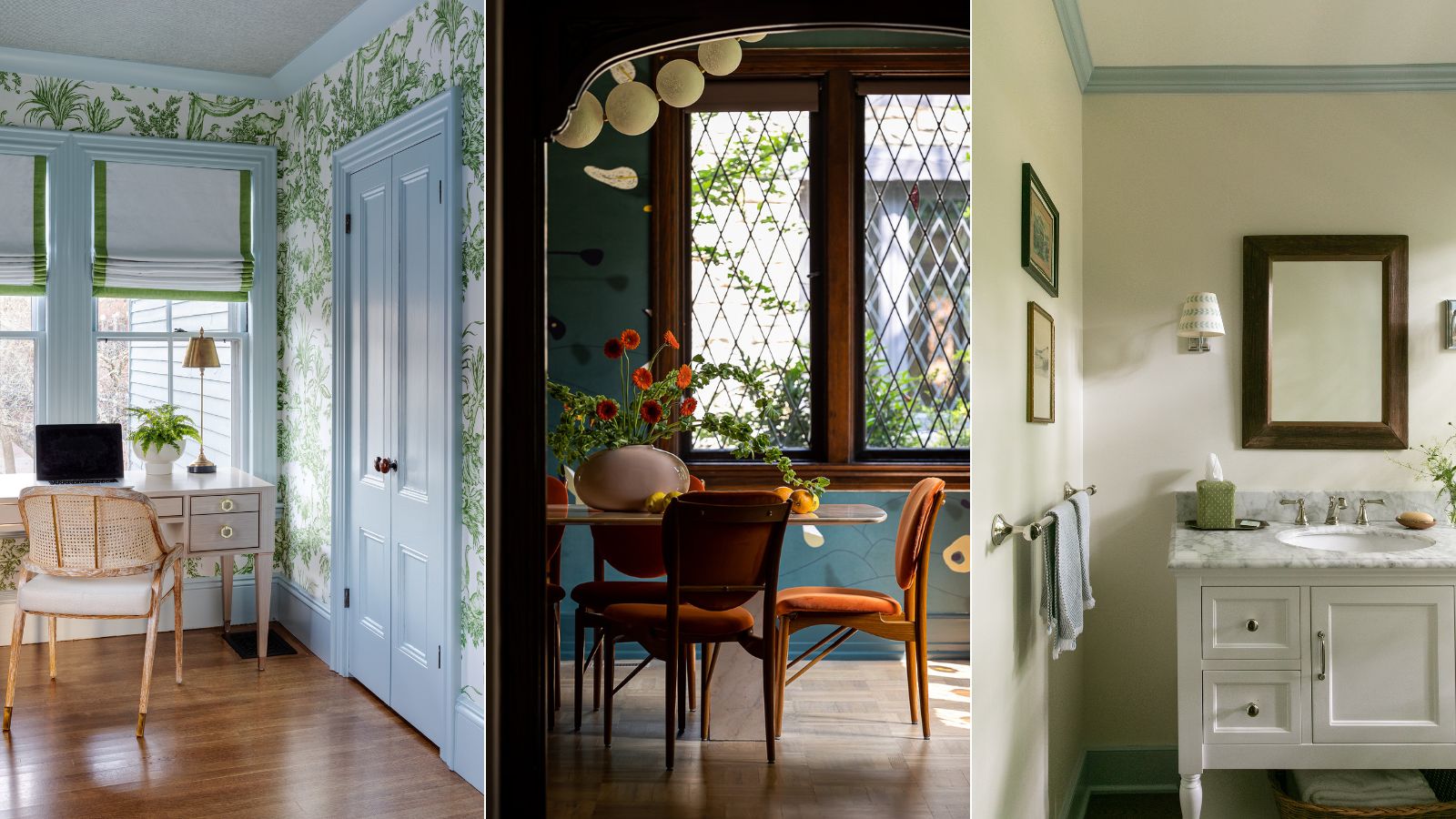
- 1. Paint woodwork a dark color
- 2. Maintain natural wood window frames but paint baseboards
- 3. Color drench for a cohesive look
- 4. Use woodwork to create an analogous scheme
- 5. Paint woodwork a tonal variation of a room's dominant color
- 6. Opt for colorful wood accents in neutral schemes
- 7. Refresh warm-toned woodwork with stained finishes
If you've ever embarked on designing a color scheme for a room, you'll have quickly faced the common question: What color should woodwork be painted?
From windowsills to door frames; baseboards to millwork, woodwork can account for a significant portion of a room, so getting their colors right is an important step in mastering room color ideas.
We spoke to interior designers to get their tips on the best colors to paint woodwork to ensure a tied-together color scheme. Whether you're working with a neutral room or are looking to inject a splash of color with your woodwork, these paint ideas have you covered.
7 designer-approved ways to paint woodwork
'Adding color to woodwork can highlight intricate details or unique architectural features,' says interior designer Swati Goorha. 'This can draw attention to these elements and add character to the space.'
Read on to see how designers paint woodwork in interior projects – from keeping it subtle to making a bold statement.
1. Paint woodwork a dark color

Painting woodwork with dark paints can create a cohesive look in schemes where the decor already reflects similar hues, much like this living space designed by Swati Goorha. A dark blue-gray hue is used across the baseboards and doorframe, complementing the room's muted color palette.
'I like accenting the space with contrasting colors that add visual interest and depth to the room,' explains Swati. 'It could be a complementary shade that harmonizes with the wall color or a bold contrast for a more dramatic effect.'
Design expertise in your inbox – from inspiring decorating ideas and beautiful celebrity homes to practical gardening advice and shopping round-ups.
It's also worth considering paint finishes which will impact how subtle or dramatic your wood accents are. 'I also like to play with matte versus glossy finishes,' adds Swati. 'Matte is a little more subdued and glossy finishes can reflect light and add a touch of elegance.'
2. Maintain natural wood window frames but paint baseboards
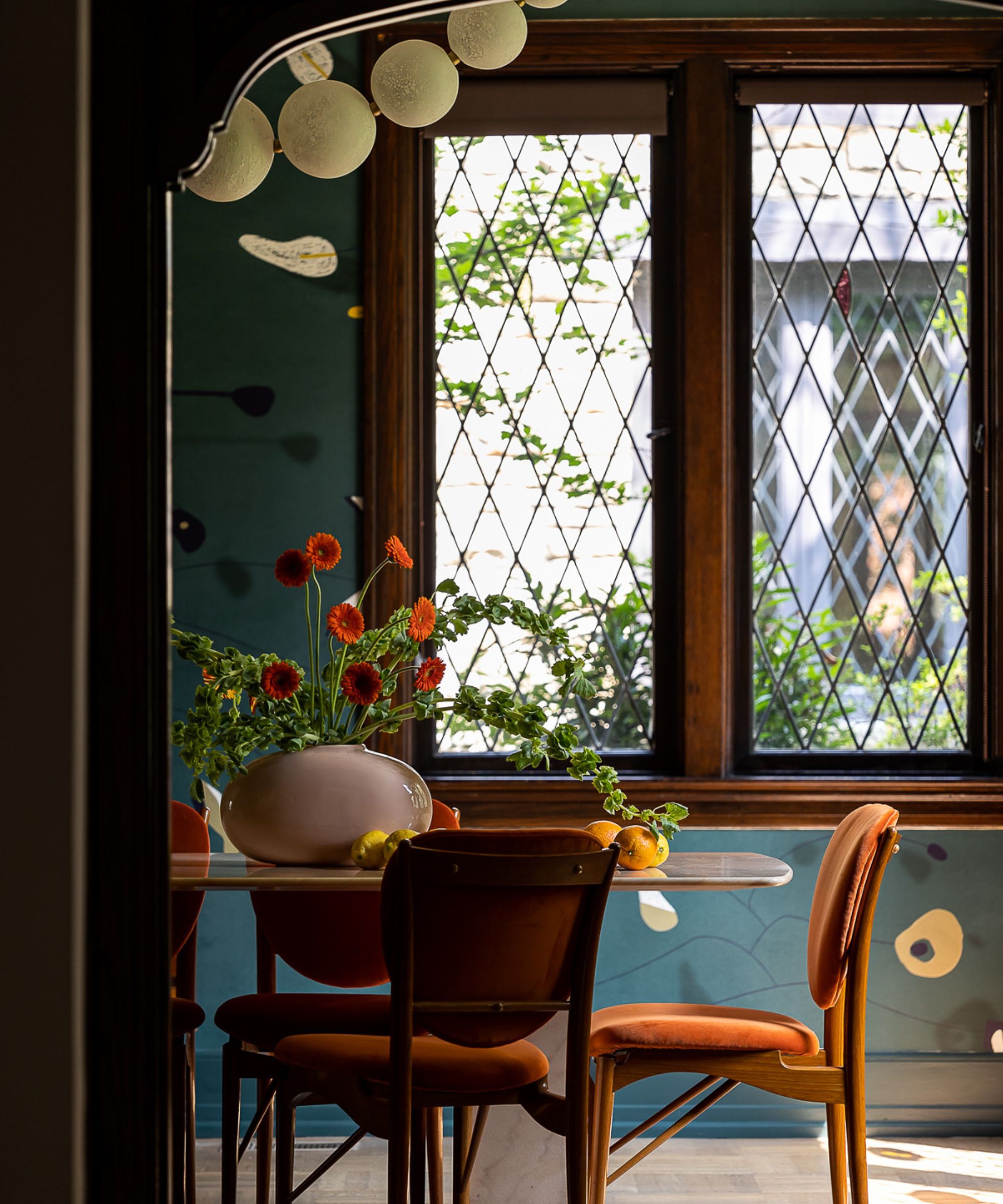
According to interior designer Bethany Adams, you don't necessarily need to stick to one color for a room's wooden accents. Letting natural wood remain across window frames can add character and warmth to a room, so think twice before painting them.
Baseboards, on the other hand, are not always something you want to draw so much attention to, so it can be worth keeping these the same paint color as your walls, according to Bethany.
'I like to use natural wood to highlight the special architectural elements of a home – such as spectacular leaded glass windows or intricately carved details – and paint the more utilitarian trim such as baseboards to match the room color,' says Bethany. 'There is very seldom an occasion when I want to draw a line around the border of a room and that is precisely what a contrasting trim detail does.'
3. Color drench for a cohesive look

If you're not sure what to do with woodwork, color-drenching ideas can usually be relied on as a failsafe option. This will see one color used across the walls, ceiling ideas, wooden trim details, and baseboards, a technique designers often use to create a tied-together look that avoids competing colors or harsh contrasts.
Interior designer Connie Vernich of Vernich Interiors explains why she favors a single-color approach, which she followed in this bathroom. 'I like to paint the walls, trim, and cabinetry the same color. It makes the room so much more cohesive when you have a lot of woodwork.'
4. Use woodwork to create an analogous scheme

If you want to lean into a colorful look, use woodwork to create an analogous color scheme. This is where you incorporate colors that sit next to one another on the color wheel, such as blue and green, as seen in this home office designed by Blakely Interior Design.
'Paint the wood elements as an accent in a complementing color pulled from an adjacent design element, such as wallpaper ideas,' suggests designer Janelle B. Photopoulos, Principal and Owner of the design studio.
5. Paint woodwork a tonal variation of a room's dominant color
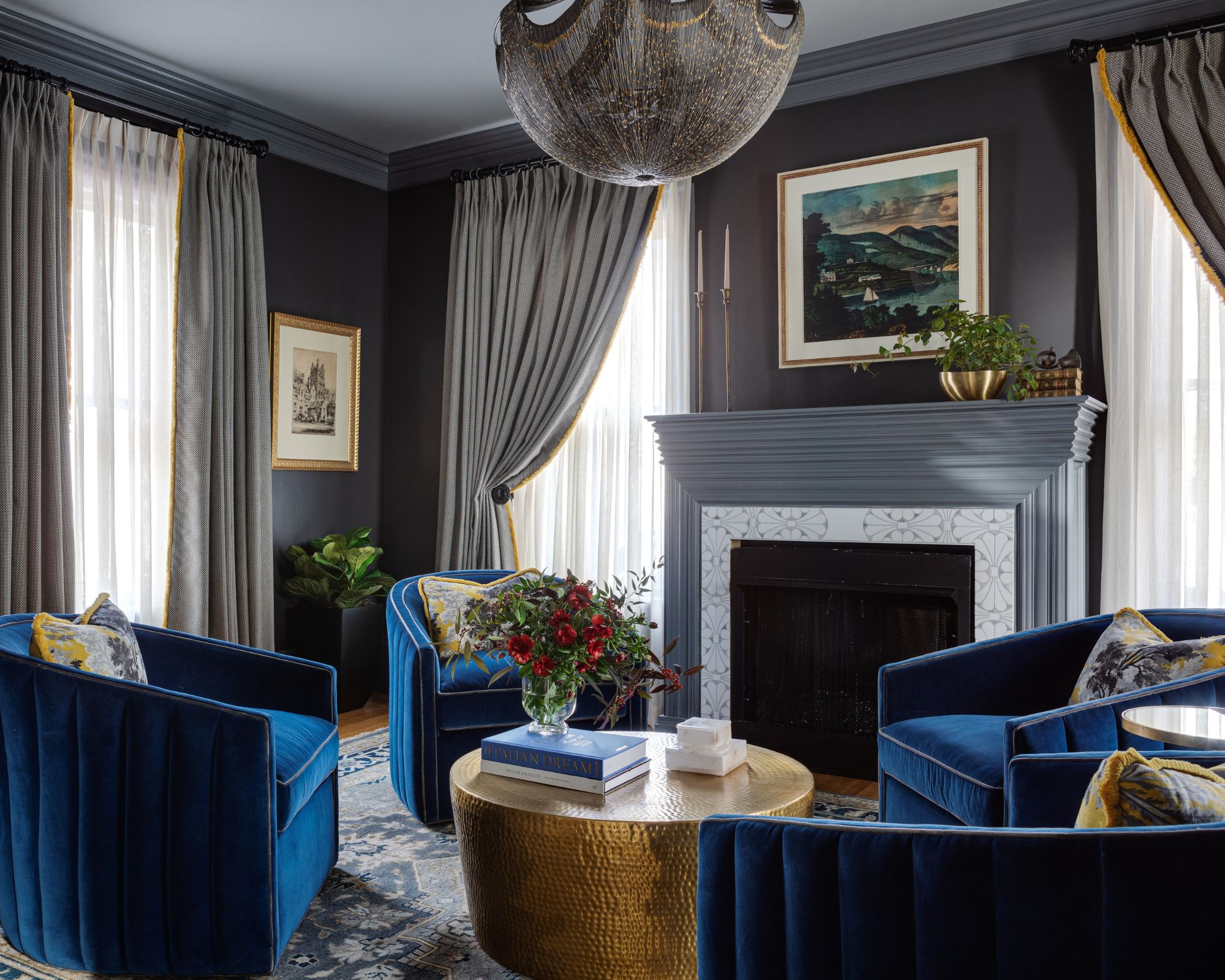
If you want to keep your room's color scheme cohesive but don't want to color drench everything in one shade, painting woodwork the same color as the rest of the room but in a slightly lighter or darker tone is an expert-approved idea.
This approach is followed in this living room designed by Blakely Interior Design. 'The walls are dark gray, but the trim, fireplace millwork, and ceiling medallion are painted a lighter shade of gray,' explains designer Janelle B. Photopoulos.
6. Opt for colorful wood accents in neutral schemes
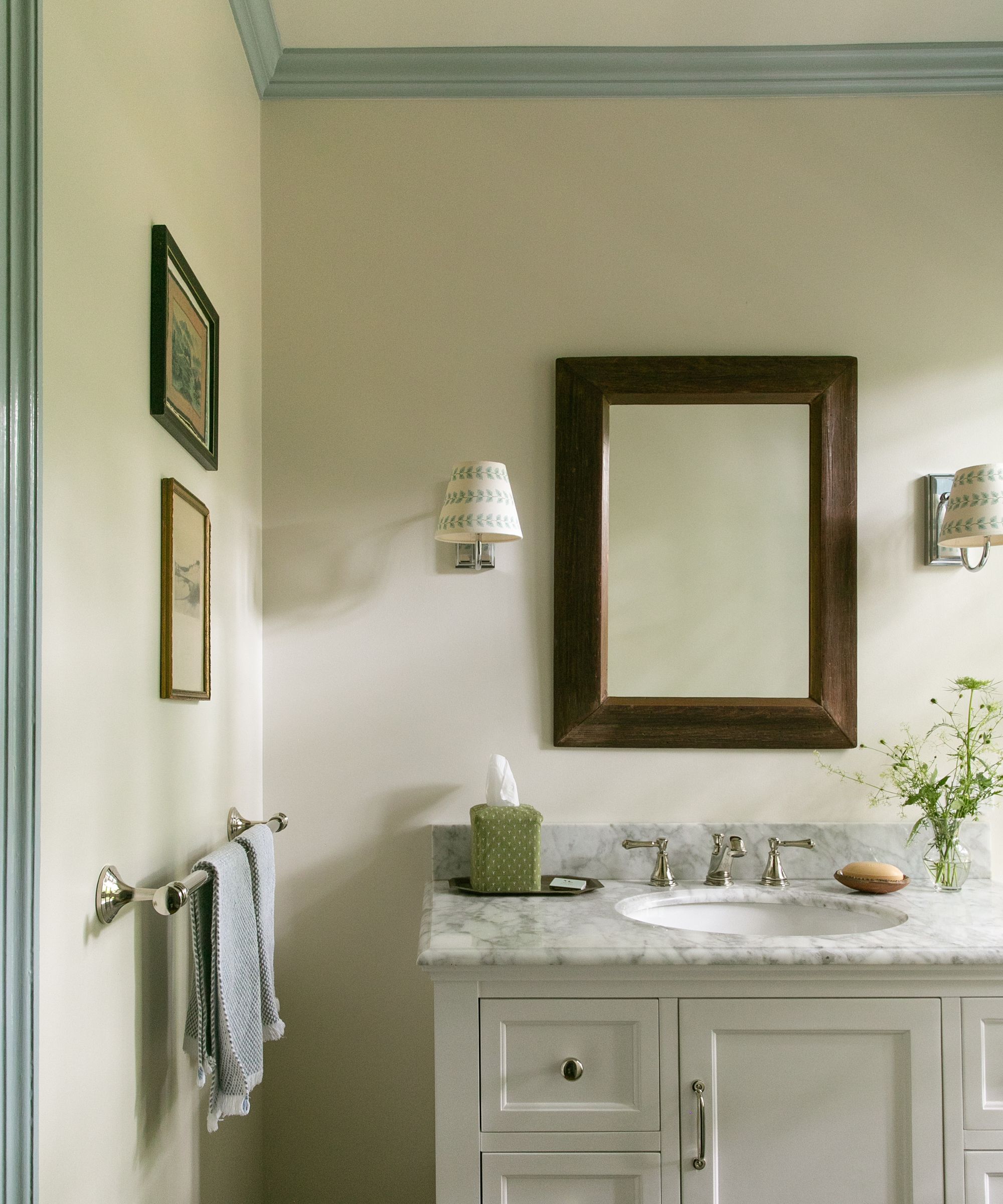
If you favor decorating with neutrals, reaching for a slightly more colorful hue for woodwork can add interest to the scheme and ensure neutrals don't look bland. This is a go-to choice for Los Angeles-based designer Alex Yeske of Alex Yeske Interiors, who painted the trim a light blue color for this neutral bathroom.
'I love painting trim with a different tone or color in a room,' says Alex. 'I especially like doing color on the trim or the door paired with neutral walls. I use a satin finish on the trim for durability.'
7. Refresh warm-toned woodwork with stained finishes
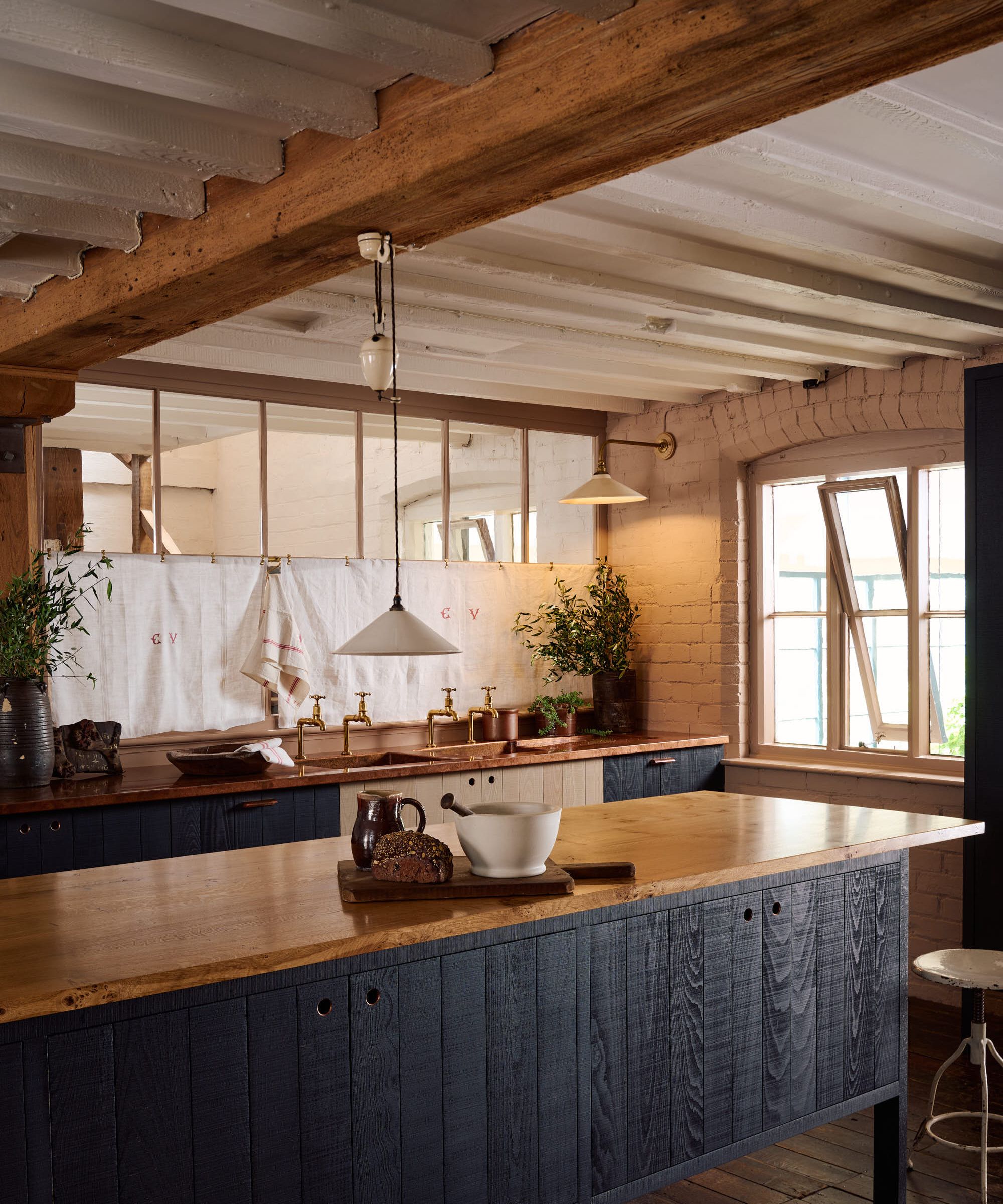
Original woodwork can hugely enhance a room, adding plenty of historic appeal and character. That said, natural wood can often portray overly warm tones which can offset a color scheme. Using wood stains is a simple way to alter the tone of the wood, without completely changing the color as a solid paint color would.
'We live in a mountain community with lots of wood features and structures that aren't always the most pleasing to the eye so we often hire painters to update wood with painted finishes to look "stained" to hide the outdated pink or orange hues that are inherent in fur or red oak,' says designer Sarah Latham of Latham Interiors.
'Professional painters will know the perfect way to blend paint or dry brush to make the wood feel more complimentary throughout.'
The color you decide to paint woodwork depends on whether you want to make a statement with darker or colorful paint colors, or alternatively create a cohesive color scheme by matching hues across a room. Either way, stick to colors that align with your interior design style and you'll soon see how these small accents can tie together a color scheme.

Emily is a freelance interior design writer based in Scotland. Prior to going freelance in the spring of 2025, Emily was Homes & Gardens’ Paint & Color Editor, covering all things color across interiors and home decor for the Homes & Gardens website. Having gained specific expertise in this area, Emily is well-versed in writing about the latest color trends and is passionate about helping homeowners understand the importance of color psychology in home design. Her own interior design style reflects the simplicity of mid-century design and she loves sourcing vintage furniture finds for her tenement flat.